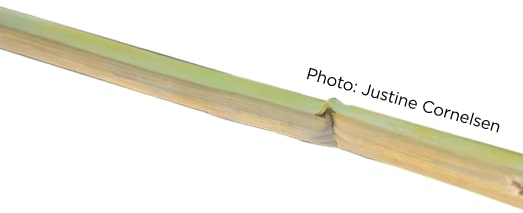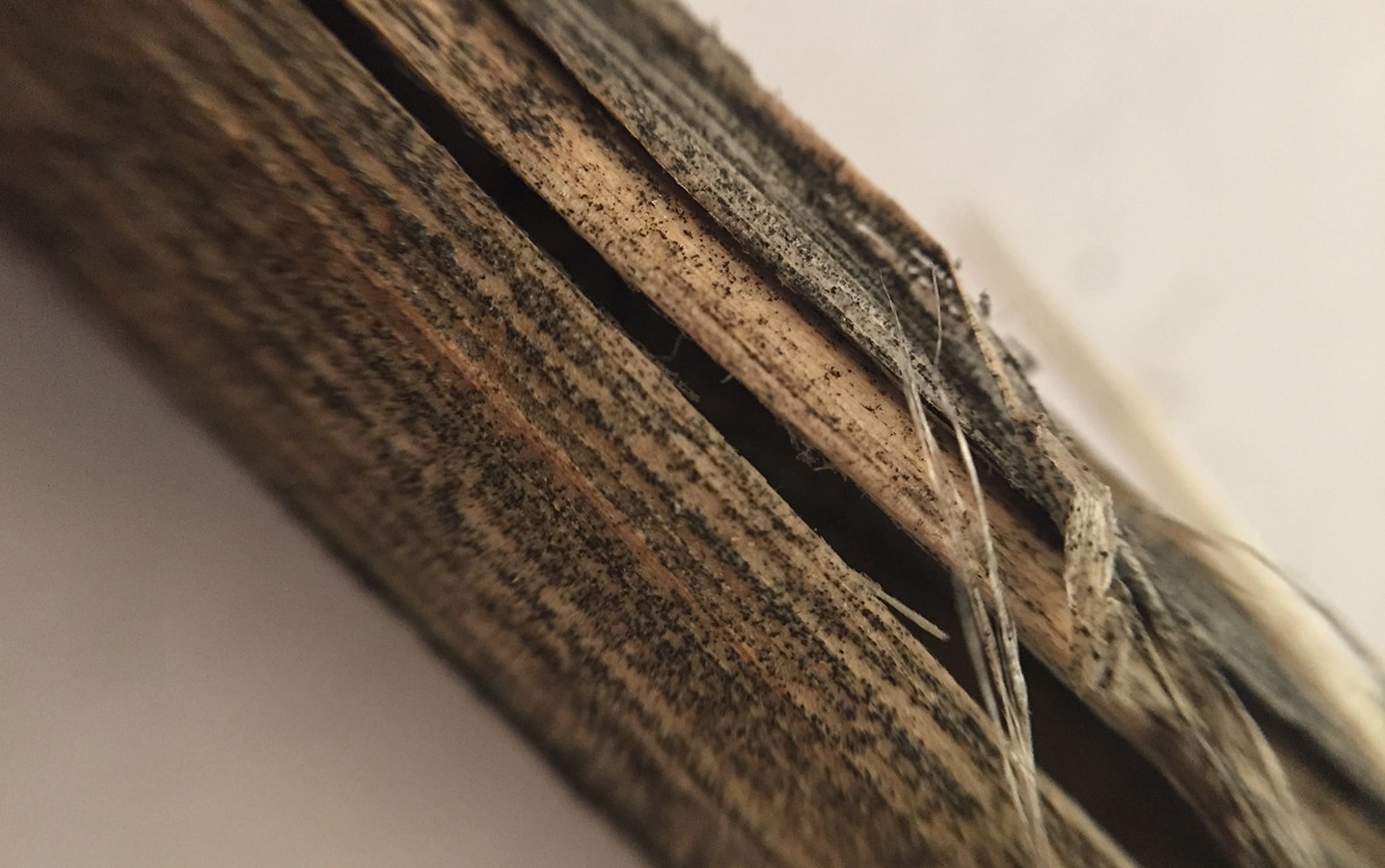Using research to prepare for a canola disease threat
The Canadian Food Inspection Agency (CFIA) confirmed that the observation of Verticillium longisporum in a Manitoban canola field in 2014 was the first presence of this pathogen in any Canadian field crop. The following year a survey found it in five more provinces. Disease symptoms were noticed in 2018 and 2019 crop years, and this past growing season some yield losses were actually attributed to the disease.
Although the vascular disease was initially referred to as “verticillium wilt”, the name has been changed to “verticillium stripe” to more accurately describe the stem striping symptom caused by the soil-borne fungus. (This symptom is often accompanied by the presence of microsclerotia and peeling back of the epidermal layer.)

The disease of Brassica plants has led to devastating crop losses in Europe, but still has many information gaps in Canada. Verticillium stripe has been recognized as an emerging pest of concern by the canola industry, and has been named a crop production research priority by the Canola Council of Canada (CCC). To better understand this disease, three research projects – which can be found on the Canola Research Hub at canolaresearch.ca – have been launched via the Canola Agronomic Research Program (CARP) and the Canadian Agricultural Partnership (CAP) program, both which are administered by the CCC. Agriculture and Agri-Food Canada (AAFC) and the CCC provide funding for CAP projects, and Alberta Canola, SaskCanola and Manitoba Canola Growers provide funding for both programs.
A four-year ‘Verticillium Stripe Management’ project is underway through CARP. While final results won’t be available until 2023, the first field trial and three greenhouse experiments have already
been completed.
These and the future experiments/trials are aimed at:
- Examining the relative virulence of V. longisporum and V. dahliae on commercial canola cultivars.
- Determining the effects of growth stage and inoculation techniques on infection.
- Evaluating the effects of disease severity on plant growth and yield at different inoculum concentrations.
Two verticillium CAP projects are scheduled to wrap up in 2023. The objectives of the ‘Verticillium disease etiology and nursery’ project, led by Dilantha Fernando at the University of Manitoba, are to:
- Further develop tools for rapid identification of the pathogen in soil.
- Understand the longevity of the pathogen and microsclerotia in soil.
- Establish the endophytic nature of the pathogen in soil.
- Measure the diversity of V. longisporum and its lineage.
- Determine and quantify the relationship and interaction between V. longisporum and L. maculans.
- Develop and utilize a verticillium nursery to provide source materials.
- Understand the yield risk of V. longisporum.
The ‘Genetics and genomics of Brassica-Verticillium interaction’ project, led by Hossein Borhan at the AAFC station in Saskatoon, is focussed on:
- Identifying resistance against verticillium in Brassica germplasm.
- Understanding genome organization of Canadian isolates of the V. longisporum pathogen.
- Understanding the biology of V. longisporum virulence and identifying virulence factors in the V. longisporum genome that are vital to colonization of the host.
- Gaining insight into the molecular interaction between V. longisporum and B. napus
In addition, the CCC is leading efforts to help the industry to finalize a disease severity scale and continues to support the monitoring of the disease spread and levels of infection through surveys.
Continue to check the for progress updates on these research projects, as well as updates on other important topics related to canola production at canolaresearch.ca.





